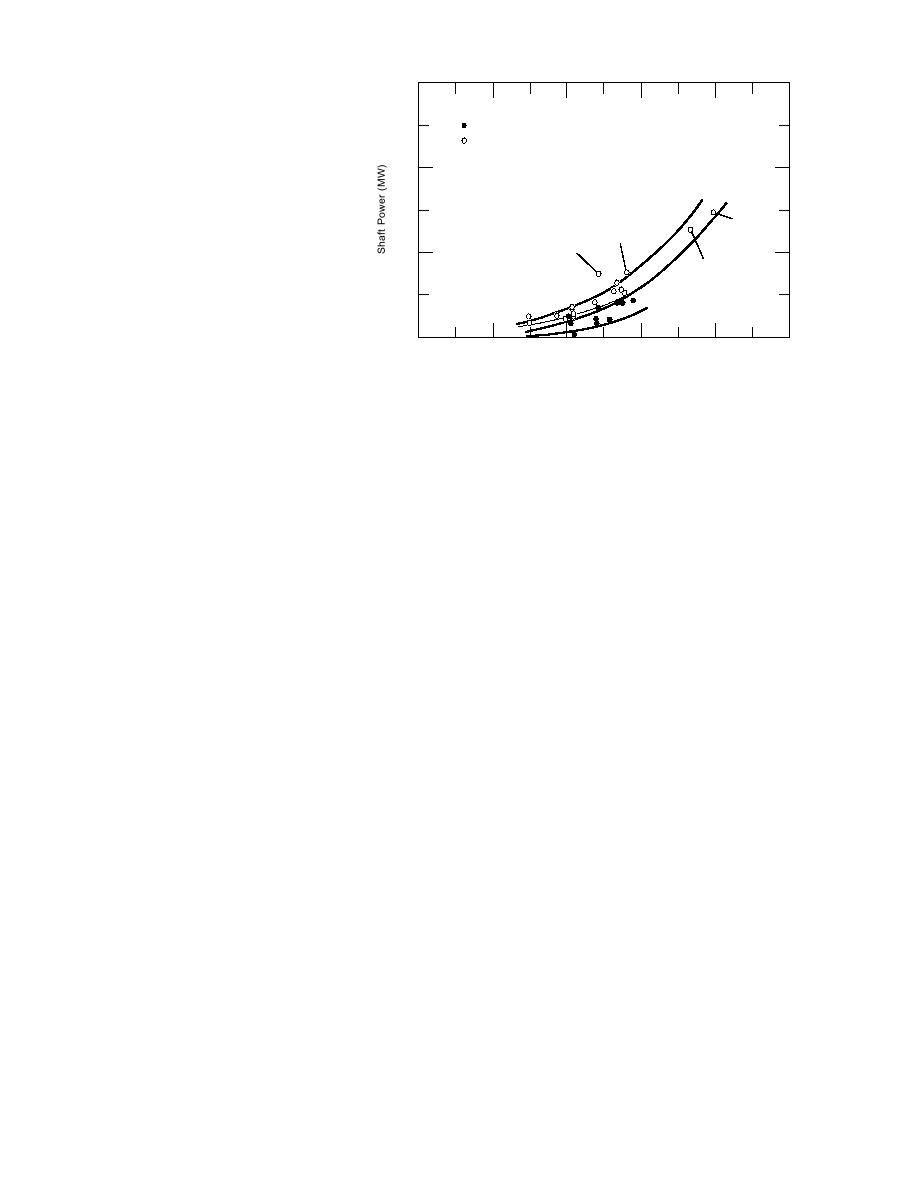
60
likely that this system will be used in
future ships, because it offers good
maneuverability in broken and intact
Fixed Pitch
ice.
Controllable Pitch
The selection of a suitable propul-
40
sion system is based on the intended
functions of an icebreaking vessel.
The requirements of a propulsion sys-
USSR
tem are:
Polar
SA-15
LASH
Star
1. Reliability of full power on de-
20
mand to navigate safely in the
Icebreaking
Dredge
Arctic.
2. Flexibility of operating effi-
ciently and economically in
open water as well as in heavy
0
2
6
8
10
4
ice at a range of power levels.
Propeller Diameter (m)
3. Maneuverability to allow rap-
Figure 16. Shaft power vs. propeller diameter for icebreaking ships (af-
id change of load, speed and
ter Dick and Laframboise 1989).
power.
4. High power-to-weight ratio to
deliver the required power, with machines
geared, may use controllable-pitch propellers to
as compact and light as possible.
obtain astern thrust and to ease over-torque
While many combinations of prime movers,
requirements. Reversing systems, such as any of
transmission systems and propellers may be pro-
the electrical systems, may used fixed-pitch pro-
posed for a given ship, very few particular sys-
pellers because over-torque does not affect an elec-
tems would fit a given mission profile (Dick et al.
trical system.
1987). Ships requiring a large range of power can
The design requirements of a propeller depend
be fitted with multiple engines or combined-sys-
on the mission profile of a vessel. The aspects in-
tem installations, which permit the numbers of
fluencing the design of a propeller are (Dick et al.
engines to be run according to the power require-
1987):
1. Loads and strength requirements.
ments of various ice conditions, to achieve the best
2. Selection of material.
combination of fuel efficiency and performance.
3. Effects of nozzles.
In the following sections, a brief discussion is given
There are two types of interactions between ice
of each of the main components of a propulsion
and propellers: ice milling and ice impact. Ice mill-
system.
ing takes place when an ice block is large or is
trapped between the hull and the propeller. Dur-
Propellers
ing an instance of milling, ice is either crushed or
Both fixed-pitch and controllable-pitch propel-
sheared by the blades, and the loads can be dam-
lers have been installed on polar ships. Fixed-pitch
agingly high. Ice impact is caused by small-size
propellers have been used for many years, and
ice pieces that are accelerated through a propeller
these are still being installed on most icebreaking
or thrown out radially and pushed around the edge
ships. However, controllable-pitch propellers have
of the propeller disk. The loads from ice impact
been used on polar ships with increasing frequency
are relatively moderate, but it happens more fre-
since 1966 (Dick and Laframboise 1989). A plot of
quently.
shaft power versus propeller diameter is shown
For propellers in a nozzle, the chances of ice
in Figure 16, where fixed-pitch and controllable-
pitch propellers have been identified. The azimuth
generated are also small in comparison to those
thruster units installed on the Finnish icebreakers
for open propellers. The factors that influence the
Finnica and Nordica have fixed-pitch propellers in
ice loading on a propeller have been identified, but
a nozzle.
the ability to determine the ice millingimpact
The selection of propeller type depends on the
loads is not well developed because of the com-
propulsion system used. Nonreversing transmis-
plex interaction between ice and propellers. The
sion systems, such as dieselgeared or gas turbine
16



 Previous Page
Previous Page
